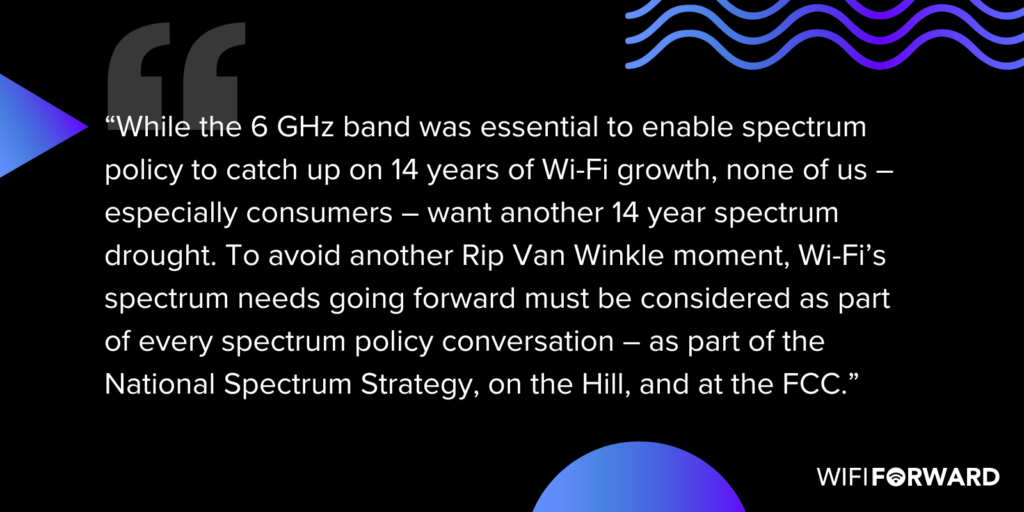In Irving’s tale, Rip Van Winkle falls asleep for 20 years, awakening to a very different world. Something like that happened to Wi-Fi spectrum, too.
In 2006, the FCC opened 255 MHz in the 5 GHz band to Wi-Fi use, spurring the development of Wi-Fi 4. Then, no one paid attention to Wi-Fi spectrum for 14 years until the FCC opened up the 6 GHz band for unlicensed use in 2020. But a lot can happen while people are sleeping:
- Apple’s iPhone was first introduced in 2007, ushering in the era of the Wi-Fi enabled smartphone.
- Fixed broadband connections grew from 82.5m in 2007 to 126m in 2020.
- Broadband speeds grew from 3.5 Mbps in 2006 to 70.7 Mbps in 2020 with Wi-Fi now at the edge of every broadband connection.
- Streaming video arrived: In 2007, it could take up to 45 minutes to download an HD movie. By 2020, that same movie downloaded in seconds.
- By 2007, the Wi-Fi Alliance had certified 4,000 unique devices, and by 2020, that number had jumped to 50,000.
- Technical sophistication and capability of devices made an enormous leap from 2007, when Wi-Fi 4 devices were introduced in the 5 GHz band, to 2020, when the FCC approved the first Wi-Fi 6E device operating in the 6, 5 and 2.4 GHz band.
And guess what? In the four years since the FCC’s action, the market dynamism we saw from 2006-2014 hasn’t stopped. It’s accelerated: median download speeds in 2023 reached 237.41 Mbps, unique devices certified now number 80,000, the revolutionary technology of Wi-Fi 7 has entered the market, and the list goes on.
While the 6 GHz band was essential to enable spectrum policy to catch up on 14 years of Wi-Fi growth, none of us – especially consumers – want another 14 year spectrum drought. To avoid another Rip Van Winkle moment, Wi-Fi’s spectrum needs going forward must be considered as part of every spectrum policy conversation – as part of the National Spectrum Strategy, on the Hill, and at the FCC.

With our nation’s economic interest in Wi-Fi large and growing (to an estimated $1.5 trillion in 2025), the Wi-Fi industry is asking that our National Spectrum Strategy include measures to open 7 GHz, adjacent to 6 GHz, to Wi-Fi technology. Doing so would allow federal users to remain and grow their networks, just as commercial users in the 6 GHz band have done.
Remember that Wi-Fi networks carry the lion’s share of data that Americans send and receive every day. Wi-Fi is the workhorse of connectivity. Our spectrum pipelines, and our spectrum plans, must address Wi-Fi spectrum. We just can’t sleep on it.
